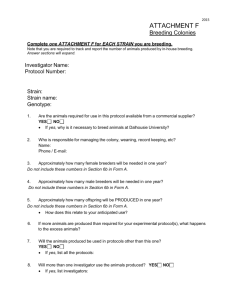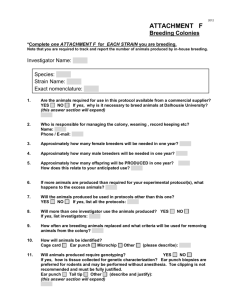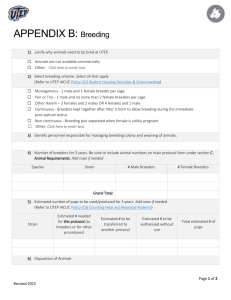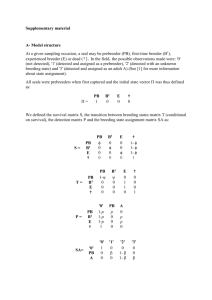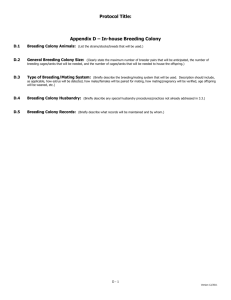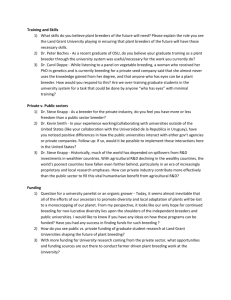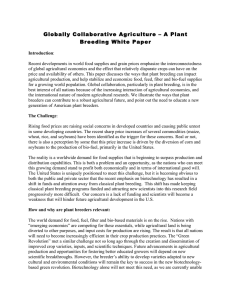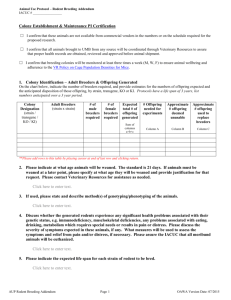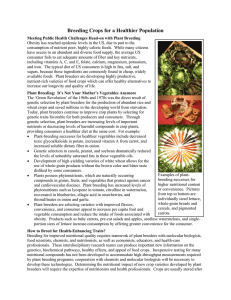ACORP-Appdx1-Breeding 2015
advertisement
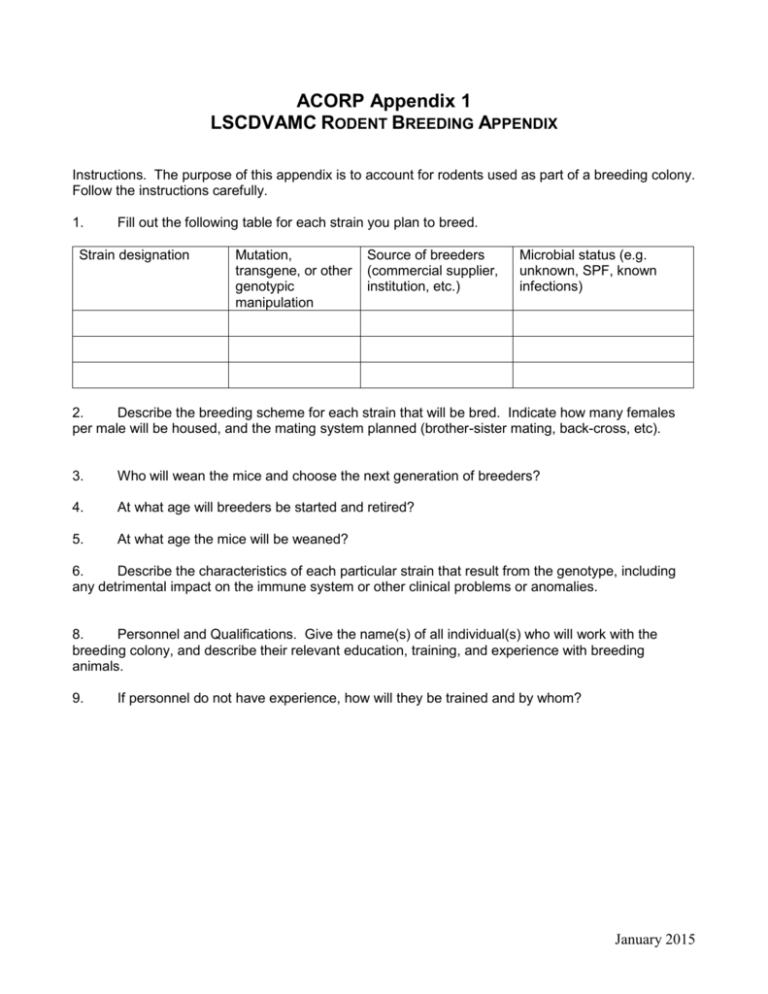
ACORP Appendix 1 LSCDVAMC RODENT BREEDING APPENDIX Instructions. The purpose of this appendix is to account for rodents used as part of a breeding colony. Follow the instructions carefully. 1. Fill out the following table for each strain you plan to breed. Strain designation Mutation, transgene, or other genotypic manipulation Source of breeders (commercial supplier, institution, etc.) Microbial status (e.g. unknown, SPF, known infections) 2. Describe the breeding scheme for each strain that will be bred. Indicate how many females per male will be housed, and the mating system planned (brother-sister mating, back-cross, etc). 3. Who will wean the mice and choose the next generation of breeders? 4. At what age will breeders be started and retired? 5. At what age the mice will be weaned? 6. Describe the characteristics of each particular strain that result from the genotype, including any detrimental impact on the immune system or other clinical problems or anomalies. 8. Personnel and Qualifications. Give the name(s) of all individual(s) who will work with the breeding colony, and describe their relevant education, training, and experience with breeding animals. 9. If personnel do not have experience, how will they be trained and by whom? January 2015 10. Will tail snips or other tissues for genetic testing be required to maintain the colony? If so, describe all tissue collection procedures, including the use of local or general anesthesia used prior to tissue collection. Amount (g) or Tissue or fluid collected Site & method of collection Anesthetic Agent volume (ml) 11. Complete the following table, using your best estimates of yearly needs. Average the figures over the next three years. Strain Number of breeders needed per year Number of weanlings that will be euthanized because of improper genotype or gender per year Number of breeding cages needed per year Number of weanlings that will be used in experiments per year Note- breeders and weanlings that will not experience any potentially painful tissue collections for genotyping, such as tail snips, and will not be used in any experiments should be placed in USDA pain/distress category B in item I on the main body of the ACORP. Breeders and weanlings that will experience potentially painful tissue collections should be placed in USDA pain/distress category D in item I. Mice in the last column should be placed in the USDA pain/distress category appropriate for them based upon experimental procedures that they will undergo. 12. Describe how the number of breeding animals needed for the study was determined. 13. Give the location (room number and facility) where the breeding colony will be located. January 2015

